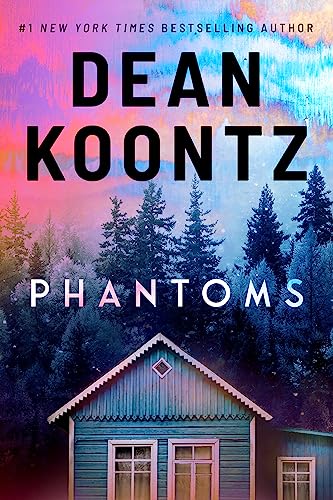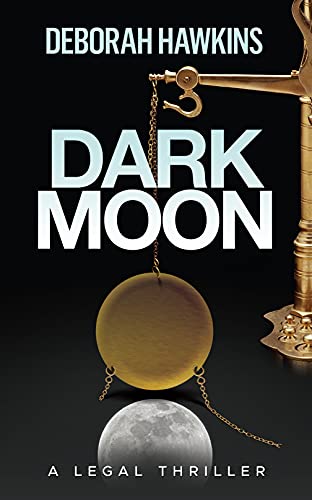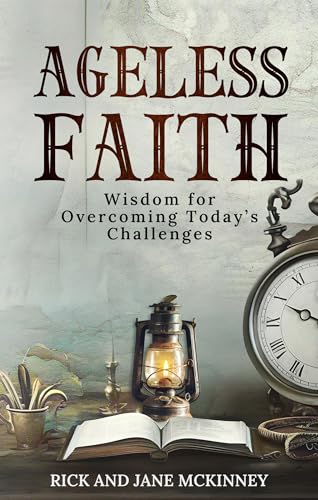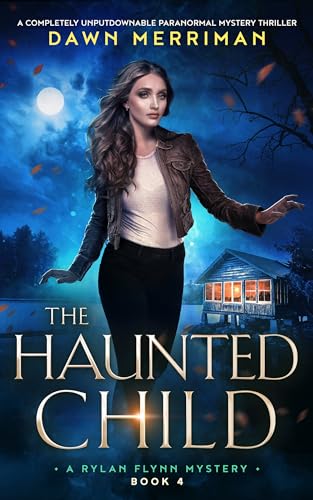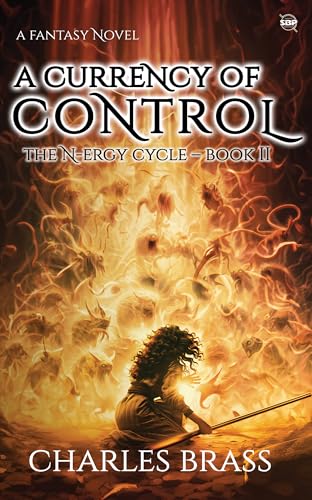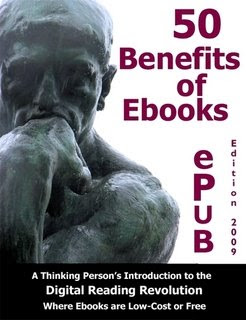An excerpt from
By Stephen Windwalker
Copyright 2008, 2009, Stephen Windwalker and Harvard Perspectives Press.
Now that we have seen how technological advances such as the Kindle, CreateSpace, and [insert Next Big Thing here] make it possible for authors and independent publishers to bring their work to readers (and, yes, “to market”) without any significant financial investment (except for the obvious fact that time is money), it is important to bring the focus back to where we started in this book: to issues of quality and distinction.
Have you ever wondered how, before the rise of the publishing industry and the New York Times Book Review, cultures managed to confer distinction on quality literary work? Who told the Beowulf poet, if not to keep “writing,” exactly, then at least to keep composing? Who told an earlier bard: “Keep up the fine work, Homer! You’ll need a good editor, but I think I hear a single!”
The processes by which cultures filter and distinguish between quality artistic work and lesser efforts are constantly subject to their own reversals, second-guessing, and border wars. At times these processes are not so different either from a game of “king of the mountain” among ten-year-olds, or from the process by which religious sects confer the status of “messiah” or “madman” on someone who walks the earth making unexpected pronouncements.
One’s acceptance (or not) of a jury’s judgments will always be intrinsically tethered to, and will sometimes inform, one’s considerations about that jury’s composition. Controversies over who gets to serve as a culture’s jury become especially fierce when the culture is undergoing major structural changes as a result of changes in audience, artistic process, and the means of production and dissemination employed by the culture’s various media.
But this relationship between the “what’s worth reading?” question and the question of “who thinks so?” is not a simple one. Even if we could agree on what constitutes excellent writing (which we can’t), there would be myriad other considerations of lesser or greater importance to individual readers. Beyond the domain of the relatively small number of books that become bestsellers, there are hundreds of thousands of books and authors with smaller but still significant followings based on genre, topic, style, personal loyalties, their linkages with other books and reading communities, and, of course, their quality as received and registered by individual readers. In a “long-tail” literary world where there is a seemingly limitless choice of individual titles, what we must do to find the books that we want to read is changed dramatically and depends on the ways in which we, and the cultural marketplaces that we frequent, are organized into tribes and sub-tribes of readers and writers. But before we explore that Googlezon present and future, a look at where we have been may help us to be clear about what there is to lose and to gain in the transformations that are shaking the 21st-century publishing world.
In the grand early- and mid-20th century world of American publishing, the Olympian judgments of venerable publishing houses such as Scribners and Alfred Knopf were accepted, by and large, by writers, readers, and other gatekeepers and tastemakers of the book trade such as critics and booksellers. Most authors trusted editors and agents to give fair consideration to their submissions and to make selections that corresponded in some discernible way to their relative quality, even if anti-artistic censorship led occasionally to the temporary suppression of distinguished efforts such as Ulysses, Lolita, Lady Chatterley’s Lover, or Howl. The fact that the publishing industry was overwhelmingly a white man’s world was but a sad mirror of similar barriers that flawed the society at large. And although it frequently did not deliver on its promises, “the life of the writer” often seemed to promise a way out of many ghettoes of race, gender, class, and psychopathology.
Authors such as Hemingway and Faulkner enjoyed special status as literary celebrities, with face time on the cover of Time and work excerpted or serialized in widely read magazines such as The Saturday Evening Post or Collier’s. This mass culture validated, reflected, and extended the literary culture, and several such authors enjoyed the kind of popular status that later became the terrain of rock stars, respected at times for literary achievement but just as often for their legends as rugged (or not) individualists who rose by their own remarkable efforts to live lives that inspired a kind of Lifestyles of the Literary Rich and Famous envy or emulation.
The fact that the mass culture was able to provide fair representation of the literary culture is testimony to the poverty of each in their common homogeneity. Still and all, 20th century literature often broadened and illuminated the human experience, helped us to fathom if not always to embrace the ghastly and lovely and banal range of human behavior, and seemed often to anticipate or give form to nearly every preoccupation of the species. The incubation and development of writers has never been precisely a democratic process, even with respect to opportunity, but these paths appeared accessible to so many that “to become a writer” became at once a lifestyle dream, a therapeutic cure (or enabler), and one of the world’s most glorious and widely held career objectives. The overall selection processes seemed fair or seamless or logically Darwinian enough that both authors and audience tended to trust and accept the roles of editors, agents, and other gatekeepers. Such trust was based on several key assumptions:
· manuscripts submitted to agents and editors would usually get a reading, and a fair reading to boot;
· agents would make a serious effort to sell any work they arranged to represent;
· there would be a rough and uneven yet still plausible correspondence between those works accepted for publication and those deemed to have either literary quality or commercial viability or both, underpinned by a widely shared if sentimental trust that the publishing world was well-populated with individuals genuinely committed to pushing the equation whenever possible in the direction of literary quality; and
· once a book was accepted for publication, its publisher would make a serious effort to market it so that it would stand a fair chance of getting inclusion and notice in the thousands of independent bookstores that were as ubiquitous then as hardware stores and in the literary periodicals that reviewed a much larger selection of literary work than they consider nowadays.
None of the foregoing assumptions has survived recent dramatic changes in the publishing industry. Only a tiny percentage of outsiders’ manuscript submissions sent to agents and editors gets even a cursory reading now. Pragmatic agents often see it as a quixotic enterprise even to submit literary fiction, narrative nonfiction, or other good work to the major publishing houses unless something about them nearly guarantees bestseller status. These houses are so driven by the need for scalable revenues and high turnover bestsellers that literary quality or enduring cultural value usually takes a distant back seat to considerations about whether an author has a marketable brand-name (think Paris Hilton, Danielle Steel, Jenna Jameson, or Tom Clancy) or a powerful cross-media sales platform (think Bill O’Reilly, Ann Coulter, Dr. Phil, or Sean Hannity).
These failures of the mainstream publishing industry and its gatekeepers to meet the cultural and economic needs of readers and writers might lead in any event to challenges to the traditional roles of judge and jury in our literary culture. But part of the publishing companies’ power also accrues from a mighty self-censoring tendency among many writers, a walking-on-eggshells phenomenon that Jonathan Franzen, in his essay collection How to Be Alone, has aptly described as “the idea … that cultural complaint is pathetic and self-serving in writers who don’t sell, ungracious in writers who do.”
Underlying these issues of fairness and sensibility is a more fundamental sea change that guarantees the continuing transformation of the publishing industry. Whatever its grandeur, much of American culture in the middle decades of the 20th century was built on assumptions of stunning homogeneity. In music, literature, film, television, and politics the only significant differences recognized by the mass culture were generational, and any cultural expressions on the “other” side of the culture’s primary racial divides were, to white audiences, for all intents and purposes “underground.”
In contrast, we now swim in a sea of limitless cultural choices. Although the explosions of the internet and digital technologies are the primary enabling forces for the existence of this long-tail world, its mere existence is not its most significant distinction. More importantly, a remarkable confluence of forces has created an active appetite for such a wide array of choices. These forces include the early indie movements in music and film, the political ferment of the sixties, changes in educational approach and, most importantly, the growth of the internet as a social and cultural networking infrastructure.
While the mainstream mega-publishers seem bound by economics and their own retrograde pre-occupation with bestsellers to fall short of satisfying the growing appetite for choice, independent publishers and entrepreneurial indie authors are well-situated to respond. Small, fast-moving publishers and authors can respond to niche needs and tribal tastes not only in fiction, poetry, and literary nonfiction but also in a wide array of other nonfiction categories.
At the most recent turn of the century, important advances in technology and the marketplace were empowering independent-minded writers and pushing the publishing world toward, if not a precipice, a significant tipping point:
· First, digitized print technologies made quality short-run book manufacturing so inexpensive that an independent publisher could surpass the production break-even point with a printing of 2,000 to 3,000 copies of a paperback original and a sell-through of as few as a third of the print run; and
· second, such publishers gained easy, inexpensive access to a gathering critical mass of sales and distribution channels including their own websites, the Amazon Advantage program, the Internet’s thousands of independent third-party booksellers, and a critical mass of independent bookstores and libraries. Wholesalers such as Baker & Taylor and Quality Books began to work proactively with small publishers and some short-run book manufacturers began to offer their small-publisher customers reliable bundles of ancillary services such as warehousing, fulfillment, distribution, order processing, regular inventory and sales reporting, and collections.
More recent developments have only intensified the velocity of change: with the advent of the Amazon Kindle and Amazon’s CreateSpace publishing platform in 2007, authors and publishers can bring literature “to market” at little or no cost, and even more importantly, with immediate connectivity to potent established markets and distribution channels that lead to millions of readers.
Each of these developments is likely to subvert traditional gatekeeping roles in the publishing industry. Will they also subvert the literary culture itself by committing it to a relentless downward spiral in quality, cheapening and “democratizing” what is available in book or any other form to the point where quality written work goes begging because it is lost in a swamp of mediocrity? Although I personally welcome, and include myself in the ranks of, an independent publishing movement, I do not diminish the importance or reasonableness of this concern about quality. I must admit to being less sanguine on this issue than former Random House editor Jason Epstein, one of the most respected elders of the American publishing industry, who wrote in his thoughtful 2001 volume, Book Business: Publishing Past Present Future, that “these new technologies will test the human capacity to distinguish value from a wilderness of choice, but humanity has always faced this dilemma and solved it well enough over time…. The filter that distinguishes value is a function of human nature, not of particular technologies.”
But we are fortunate to have particular technologies to give human nature an assist. The internet offers a viral post-advertising expansion of communication channels and platforms by which readers may communicate not only with each other but also inter-actively with writers, publishers, booksellers, and librarians about the content and quality of books and other media. Within these protean networks all advertising is forbidden but almost any medium can carry, in its DNA, an acceptable alternative to marketing.
There is much for an indie publishing movement to emulate in the processes by which the “do-it-yourself” spirit in music and film during the last two or three decades has broken through to build a kind of positive if generic “brand” distinction for “indie” maverick movements in their own right, as compared with the self-publisher’s “vanity press” stigma that must be overcome by independent book publishers. It is no accident that one of the more articulate voices promoting an indie book publishing movement, editor-in-chief Johnny Temple of Akashic Books, would write in a recent Poets & Writers article that “I entered the book business through the portal of underground rock music.
“The idea,” wrote Temple in describing the musicians’ indie movement, “was that hardworking bands, upstart record labels (often launched by musicians) and dedicated fans could forge a vital, idealistic alternative to the mainstream music business.” The importance of those “dedicated fans” should not be underestimated; writers, publishers, booksellers, librarians, and mindful readers should seek out every available opportunity to cultivate vehicles for reader communication, reader-writer contact, and reader self-identification with an indie movement of writers and publishers. Both in the physical world of reading groups, bookstore readings, library discussion groups, and Oprah segments and in the web world of book blogs, meet-ups, online social networking sites and Amazon customer reviews, the potential for such interaction is exploding far more dramatically than the population base of physical or digital book readers is atrophying. Writers’ groups, which tend as it is to function simultaneously as readers’ groups, would do well to seek out any chance to broaden their base and replicate or extend themselves as reader-writer affinity groups. One can easily imagine the Kindle itself, with its huge (and mostly still untapped) potential for file-sharing, annotation, and networking, as a primary hub for such communities if future price breaks and next-generation input enhancements allow.
Even in a cultural environment such as the blogosphere – a seeming narcissist’s paradise where the ego-gratification of traffic and comment is instant and almost every reader is also a writer – literary culture is braced by forces that are, in one sense, as old-fashioned as book discussion groups or the knowledgeable independent bookseller whose recommendations join her wide reading experience with her understanding of her customers’ reading interests and tastes. Yet as old-school as they may be in basic form, the internet recapitulators of these natural outcroppings of human nature can be almost unimaginably more powerful because they are also viral, instantaneous, and global.
Readers and book browsers in every age have wanted to know, in evaluating whether to take a chance (either with their time or their money, or both) on a book, how many others are reading it, who they are, and what they think of it. This information serves not only to send signals about quality; it also feeds a deep and powerful tribal urge for many readers. They want to read books (or see movies or hear music) that will spark and perhaps elevate their social and intellectual interactions with others, and when they read good books they want to seek out people with whom they can discuss the books, their ideas, their characters, and so forth. Disclosing one’s reading, musical, and film tastes has become such an automatic self-branding ritual that, in addition to helping to bring you new recommendations for a book to read on Sunday morning, the act may also help you to find a date on Saturday night.
Just as buzz breeds buzz, the process by which sales success breeds sales success is not limited to those permutations that involve readers (or all the book trade’s gatekeepers) noting a title on the New York Times bestseller list and then making room for it in their own plans. On the internet, whether in book blogs, among the apparently democratic and accessible book review and rating templates to be found on Amazon.com or its emulators, or in countless other venues yet to be imagined, the information that a title is selling well is instantly available, easy to use, and all the more likely, because of its own seemingly transparent and unmediated character, to serve as a quality filter or signaling system for readers and for all the other aforementioned gatekeepers of the book trade. The natural consequence of these processes in our hit-obsessed culture will be to ensure that we will always have bestsellers, perhaps even long after we have book publishers in the traditional sense, even if over time the sales requirements for attaining such status are somewhat moderated.
For all of its fertility as a vineyard for individual creativity and differentiated voices, the web is also an elegantly complex yet exquisitely simple binary world where, as with the inner meta-biology of the human brain, content and process may eventually be equivalent. Every word that is typed, read, linked, or clicked becomes traffic and velocity, and every hit is its own unmediated form of comment, and therefore of content. Every time we tag, visit, rate, buy, link, bookmark, download, sample or otherwise engage content, let alone when we write a comment or customer review or include it in our blog or blogroll, we are buzzing: asserting that certain content appeals to us or appalls us or bores us and may have a similar effect on others in the various tribes or networks to which we belong. We often choose these groups on the basis of the shared appeal of certain content; indeed they often spring up on an ad hoc basis around certain authors or books, certain musicians or films, etc. Importantly, given the leisure-time deficits with which many of us live, the bar of participation can be set as high or as low as we like.
These processes are as important for audience as they are for artists. It is obviously my intention here to be an advocate for the kind of cultural citizenship or activism that helps to define and organize the tribes and literary affinity groups of which we have been speaking, and to sort and distinguish the work of authors and other creators. I will always encourage people to exercise their rights as audience members in these ways and to recognize that the infrastructures of Amazon, Google, YouTube, iTunes, MySpace and countless other websites are so effective and seamless that – in ways that are so automatic that they may deserve the phrase “whether we like it or not” – we are all buzz agents.
What was that I called you? Well, pardon my presumption. You may not have a marketing bone in your body, but you are a rare individual if you haven’t weighed in with others on a few of the following topics: books, politics, music, film, cars, television, technology, destinations, sneakers, swimming holes, food, restaurants, bars, businesses, business models, magazines, babysitters, schools, fashion, driving directions, or plumbers. We learn early on how to influence others and how to find value for ourselves in the influence of others, with varying degrees of mindfulness and vigilance about the process depending on the forum in which it is occurring, the self-presentation of others, and our individual natures. Increasingly, as our culture gets meaner and more cynical, we are distrustful of influences that appear to be directly commercial, only to find that the marketing wizards are spending billions on buzz that is indirectly commercial. We may think that it is at the point when we have to stop and apply a bullshit detector to all this buzz that we have left Eden, but the truth is that we have not been to Eden for a while.
Being a lover of books and reading, a bibliophile, early in the 21st Century, often means being a pro-active and curious inquisitor, scouting out writers that appeal to you among the offerings of trusted authors, small presses and literary magazines, the remaining independent bookstores, reading groups, Amazon reviews, and book blogs. It often means making early commitments to the careers of authors you love and tracking every printed or digitized word they produce. It may even mean giving up a smidgen of your intellectual privacy, whether to your local bookseller or librarian or to the algorithm aces at Amazon.com, in order to allow them to use their gifts at what the marketing mavens call “collaborative filtering” to help you, who loved the book of Richard Ford stories you read on the beach last summer, to find a Ray Carver selection to read this summer.
I have no doubt, as one who has satisfied his own reading appetites through various combinations of these and other means for the past few decades, that a large part of what motivates us as book scouts and buzz agents is the joy of discovery and then the gratification and validation of sharing what we discover with those with whom we sense some common ground: “Eureka! I’ve been reading the most wonderful book! I’ll pass it on to you as soon as I’ve finished.” However much we may experience the reading itself as either solitary or, in connection with the author, dyadic, it can also become, with our bibliophile soul mates, satisfyingly social. And in our internet age, we can carry out these interactions either locally or globally.
As with most other scouting enterprises, scouting for good books to read – and especially for books that suit our very individual reading needs — is often a two-way street. The more we “speak,” the more we will “hear.” The more we listen, the more we will know about who we want to speak to, what to say to them, and what to ask them about. Along the way, we even learn a fair amount about how to conduct the conversation. One of the remarkable things about cultural marketplaces such as Amazon is the way in which they seem to train their visitors to become better and better at using the wealth of material that exists there to get their needs met.
Of course, to raise concerns about quality as if they only applied to the new forces in publishing is to beg the question regarding the performance of the traditional publishing institutions as defenders of literary quality. I am far from being the first writer to experience the relationships between authors (or, for that matter, readers) and the mainstream publishing industry as adversarial. I suspect that most of us, either chronically or episodically, are inclined to view almost anyone who tries to regulate our creative and cultural lives with some mixture of annoyance and contempt. If the issues that annoy us seem increasingly to be systemic rather than personal, then it is entirely appropriate for us to develop a sense of mission about the need to make things right. The mainstream publishing industry and its more Olympian apologists may prefer to cast such struggles as occurring between the guardians of publishing excellence and the rabble of artistic democracy, with the subtext that those in control, as much as they might like to suffer a thousand new flowers to bloom each publishing season, are, at the end of the day, the last remaining protectors of literary quality.
But all one must do is look around, in any chain bookstore or on the latest bestseller list, to conclude that, while the mainstream publishing industry may in some places have the elitist trappings of snobbish self-importance, it is not meritocratic in any way that is connected to literary quality. We note, without taking any pleasure in it, the fact that the quality filtering process that helped to make a bestseller of such a magnus opus as Jenna Jameson’s How to Make Love Like a Porn Star or the latest scribblings of Paris Hilton or Rush Limbaugh is something less than meritocratic to begin with.
Once one determines that the big publishers could care less about quality at the expense of blockbuster bestsellers, it follows naturally that any renegade movement to allow independent creative people to make more of the decisions about what to publish and how to get that product into the hands of interested and discerning readers could be, and should be, less about artistic democracy than about artistic meritocracy and literary freedom. As growing numbers of writers accept the gifts and challenges of new technologies and our ubiquitous American entrepreneurial spirit and embark upon non-traditional publishing ventures to get their work before the reading public, we would be wise not to leave these issues of quality filtering, of “the cream rising to the top,” either to the happenstances of human nature or to the vagaries of an untended marketplace. Along the way, some of us will be able to bring the universe of choices into smaller scale by connecting, if you will excuse my overburdening of that “cream to the top” metaphor, with consumers who prefer soy milk, goat’s milk, buttermilk, and so forth.
For the self-interested author who believes that she has just self-published the next Great American Novel, the admonition in the previous paragraph may seem to be just another way of saying, “Don’t just sit back and wait for the orders to start rolling in.” But I mean to make a broader point: readers and writers, and especially those of us who locate ourselves vocationally anywhere in the literary culture, stand to benefit both directly and in a more general cultural sense by doing all we can to nurture those networks and informal associations that in one way or another honor, advance, and extend the market viability of literary work of distinction, of writing that is thoughtful, interesting, edgy, experimental, or, in the best sense of the word, ambitious. Perhaps this has always been true, but the stakes are higher now because the publishing industry at large is failing so miserably at these tasks and because, to be blunt, of the sheer volume of choices when something in the ballpark of 300,000 new titles is being printed each year.
There is already quite enough angst and hand-wringing about this flooding of the marketplace; I don’t mean to suggest that any of us should posture or anoint ourselves as some sort of high-culture quality police. We can celebrate the candles without cursing the darkness, and I am much more troubled personally by the market flooding that is the result of the vast overprintings of individual titles, to the detriment both of the planet and of that quaint old phenomenon known as the mid-list title.
From here onward, there will be many good works, some in book form and some in shorter form that, because of the opportunities provided through the Kindle, the CreateSpace print-on-demand feature, and other yet-to-be-realized technologies, will be available “forever” and, absent any marketing, will sell usually in trickles of one or two each month, several each quarter. We can embrace this good fortune and, at the same time, be pleased that, much further out along the farthest reaches of the long tail, there will be works of the least significance and distinction, supported by the weakest of networks or no networks at all, that will exist only as onesies, twosies, or seldom-transmitted digital files. In the utter absence of buzz, quality, or usefulness, there will be only the sound of trees not having to fall in the forest because there is nobody there.
The moment may even come, as the role of the large commercially drive publishers declines, when one of those unreadable and unsellable titles will indeed be one that in another era might have been printed, remaindered, and ultimately destroyed by the hundreds of thousands. Of course we will never know when that elegantly silent moment occurs, but even without our being able to circle a date, I suggest that we should be able to celebrate its advent.
All rights reserved. No part of this book may be reproduced or transmitted in any form or by any means, electronic or mechanical, including photocopying, recording, or by any information storage and retrieval system, without written permission from the author or publisher, except for the inclusion of brief quotations in a review, article, book, or academic paper.
Unattributed quotations are by Stephen Windwalker.
ISBN 0-9715778-6-2
First Edition, 2008; First Printing, 2008
Library of Congress Cataloging-in-Publication Data
Windwalker, Stephen.
Beyond the literary-industrial complex: how authors and publishers are using the Amazon Kindle and other new technologies to unleash an indie movement of readers and writers / by Stephen Windwalker. – 1st ed.
Includes bibliographical references and index. ISBN 0-9715778-6-2 (trade pbk.: alk. paper) 1. Self-publishing—United States.









